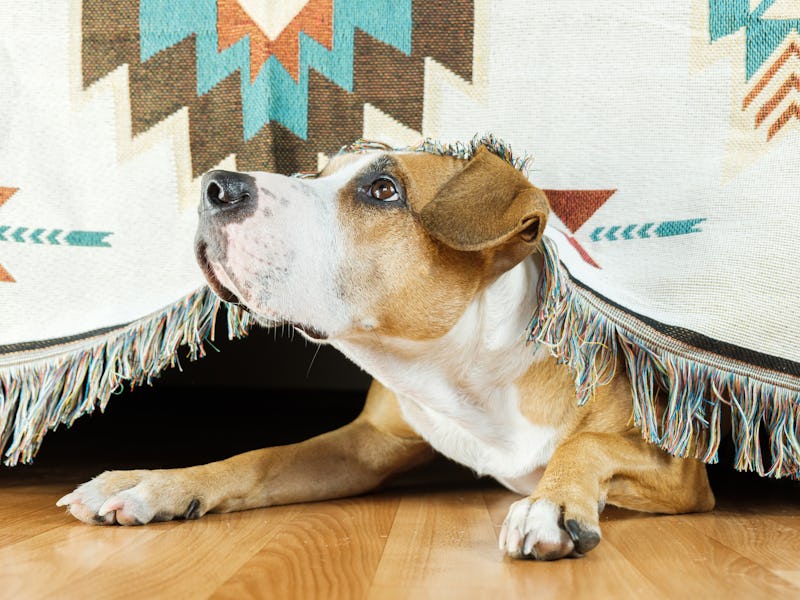6 essential strategies dog owners can use to help separation anxiety
People around the world have been spending more time at home since the start of 2020. For many of these people, this seemed like the perfect opportunity to get a pet.

People around the world have been spending more time at home since the start of 2020. For many of these people, this seemed like the perfect opportunity to get a pet.
In the UK alone, an estimated 3.2 million households have acquired a pet since the start of the pandemic. Dogs were the most popular new acquisition (57 percent) with cats a close second (38 percent).
This sudden increase in pet ownership raises concerns about pet welfare. Puppies acquired during lockdown have been missing out on critical socialization experiences and training, which is known to be associated with stress-induced behaviors ranging from nervousness to fear-based aggression.
It isn’t just the pandemic pets that may be showing signs of stress or behavioral issues. Life hasn’t been normal for many of our dogs for most of the past year. They’ve had less interaction with other dogs, fewer visitors coming into the home, and little time alone since the pandemic began.
This has led to a noticeable change in dog behavior. Growling, snapping, or nipping at children when approached and handled by them increased by 57 percent during lockdown. Google searches for “dog bark” and “dog bite” increased by 48 percent and 40 percent respectively, suggesting some aspects of the lockdown period were particularly challenging for our pets.
As humans, we tend to focus on situational stress — work deadlines, or paying bills. But stress can be caused by anything that upsets the body’s hormone balances. The presence of a stressor results in a hormone cascade, culminating in the release of glucose that provides a burst of energy designed to help escape the stressor. This sets off the fight, flight, or freeze response.
Stressors range from a physical threat, such as a predator, to an unpredictable environment, which our pets might be experiencing now lockdown restrictions ease. This isn’t limited to dogs and cats. Changes to routine, particularly feeding schedule, have been shown to induce stress in birds, sheep, and horses.
Is your pet stressed?
Signs of stress in your pet may be obvious, such as destructive behavior or vocalizing. But, there are also more subtle signs of anxiety, such as panting or drooling, pacing, repeatedly checking windows and doors, or chewing or scratching themselves.
Lockdown may, unfortunately, have a long-term impact on pets’ ability to cope when left home alone. Dogs that had separation anxiety before the restrictions started are likely to get worse when left again as owners head back to work. But we also expect to see new cases developing, because other dogs, and particularly puppies, have learned to expect company all day.
Left at home alone.
Research last year showed 82% of dog owners surveyed noticed an increase in their dog whining or barking when a household member was busy. There was a 41% increase in reports of dogs being clingy or following people around the house during lockdown. All of these can be indicators of separation anxiety developing.
Try these 6 tips
The good news is, it’s not too late to prepare your dog for lockdown easing and to teach them vital skills that they can apply in any situation.
6. If you’re starting to spend more time outside of the house, you need to remember that this change in routine is stressful for your pets. Start preventative measures now to avoid future problems.
5. If you have a dog who was previously used to being left alone, make sure you maintain their ability to cope with this by introducing periods of separation during the day when you are in the house – such as placing them behind a baby gate whilst you are working from home. Leave your dog at home for short periods of time.
4. Build up the amount of time your dog is separated from family members gradually and associate it with something positive, such as a long-lasting treat.
3. Monitor how your dog responds, and shorten the time left if they show any signs of anxiety.
2. Where dogs are already showing signs of separation anxiety (such as barking, howling, toileting, or being destructive when left), seek help from your vet in the first instance.
1. Avoid looking for “quick fix” solutions like anti-bark collars or punishing your dog on return. These approaches will likely exacerbate the problem and result in more serious and more difficult to treat problems in the long run.
Teaching dogs to be relaxed when left alone takes time and patience, particularly for the pandemic puppies that have rarely been away from their owners. But making the effort to show your dog that being alone is not stressful, using our advice, can prevent serious problems that are much more difficult to treat later in life.
This article was originally published on The Conversation by Niki Khan and Jenna Kiddie. Read the original article here.
This article was originally published on